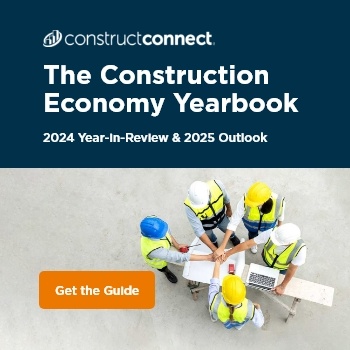Statistics show that unemployment was at 14.7% in April 2020, the highest rate in America since the Great Depression, and gross domestic product fell by 4.8%.
Do we just sit and watch as our own economy self-destructs, or do we try to salvage what's left and bounce back? Indeed, every forward-thinking person is asking, "What now? How can the economy be saved?"
According to the Associated General Contractors of America, the construction industry bears over 7 million employees on its back and creates structures worth nearly $1.3 trillion every year. It is only right to point out that if any industry can spearhead the recovery of the American economy, it should be the construction industry.
Strategic moves by the government and players in the industry will begin to ease the weight bearing down on the construction sector, and the effect will eventually rub off on the other industries, altogether giving a much needed boost to the national economy.
The billion dollar question is "How?" What measures can the players in construction take to help the economy bounce back?
1. Adapting to the Current Health Crisis
The construction sector was not left out when the pandemic clawed away at everything we labored for over the years. In fact, the construction industry lost about 975,000 jobs in April of 2020 alone, according to the Associated Builders and Contractors (ABC).
Every industry felt the heat. However, the construction industry is poised to be the one with the highest level of adaptability to the current crisis. Construction companies are already health conscious, with the regular safety measures against injuries and hazards in place. It can't be so difficult taking a few steps further then?
Enforcing specific orders as regards physical distancing, sanitization, and other precautions at construction sites will afford the industry the liberty to continue work mid-scale, although it may take longer periods. Even though projects' timelines will have to be stretched, work will be consistent and safe.
2. Recognizing Construction as a Major Pillar of the Economy
The construction industry shelters the public. It brings about roads, offices, schools, hospitals, malls, etc. It is tied to the health, transport, education, and manufacturing sectors. It is safe then to refer to the construction sector as a pillar of the economy.
Expenditures by the government and major investors alike should focus on construction by clearing all backlog put on hold as a result of the pandemic. Once previous projects are completed, new ones should be assigned in order to create jobs for construction workers, manufacturers and distributors of raw materials. These will in turn circulate money through various means.
Really, a wealth chain is what it is. Series of events starting out at the top of the chain (construction) will impact other industries, ultimately triggering a circulation of jobs and wealth.
3. Adoption of Blue-Green Infrastructure
The blue-green infrastructure incorporates water management alongside landscaping. The idea is to solve urban and climatic challenges by building with nature. The use of sustainable drainage systems to mimic natural water cycles is cost-effective and can reduce the risk of flooding. Green vegetation improves the quality of air and reduces the debilitating health effects of air pollution. Blue-green infrastructure can also boost the economy due to the various recreational opportunities it provides.
4. Absorbing Labor From Areas With a High Covid-19 Impact on Employment
As stated earlier, millions of Americans, including construction workers, lost their jobs due to the pandemic. Areas with a higher rate of unemployment are places where most jobs are informal or blue collar.
Most construction workers work short-term, and appointments are terminated on completion of a project, meaning a lot of people were without jobs as the bulk of construction projects were put on hold.
The construction industry is reported to employ about 7% of the global workforce. It is largely labor-intensive. In areas of mass unemployment, local labor can be hired for construction and running logistics. The unskilled laborers can handle basic tasks with next to no training, such as supplying materials, transporting workers and machinery, and security, while the skilled workers can handle the actual building.
A lot of construction work can be assigned to workers in areas with a higher Covid-19 impact in order to create jobs for the residents, thus reducing the rate of unemployment. Ensuring that all stakeholders are aware of their legal rights is also key—revenue and income protection via filing preliminary notices in California and other states that require it is something contractors, suppliers, and subcontractors must know so as to not expose themselves in further financial risk.
Conclusion
It is important to understand that the global economy will not suddenly stabilize because workers have observed physical distancing for a week of intensive construction. Neither will a month of reliance on tech work the magic. The long-term effects of the pandemic may necessitate a restructuring of debt and need for new capital sources.
Everything that has affected and will affect the economy is a build up of calculated actions and decisions, over long periods of time. One step in the right direction is a step closer to full recovery.
 Patrick Hogan is the CEO of Handle.com, where they build software that helps contractors, subcontractors, and material suppliers with late payments. Handle.com also provides funding for construction businesses in the form of invoice factoring, material supply trade credit, and mechanics lien purchasing.
Patrick Hogan is the CEO of Handle.com, where they build software that helps contractors, subcontractors, and material suppliers with late payments. Handle.com also provides funding for construction businesses in the form of invoice factoring, material supply trade credit, and mechanics lien purchasing.


 Sign In
Sign In


